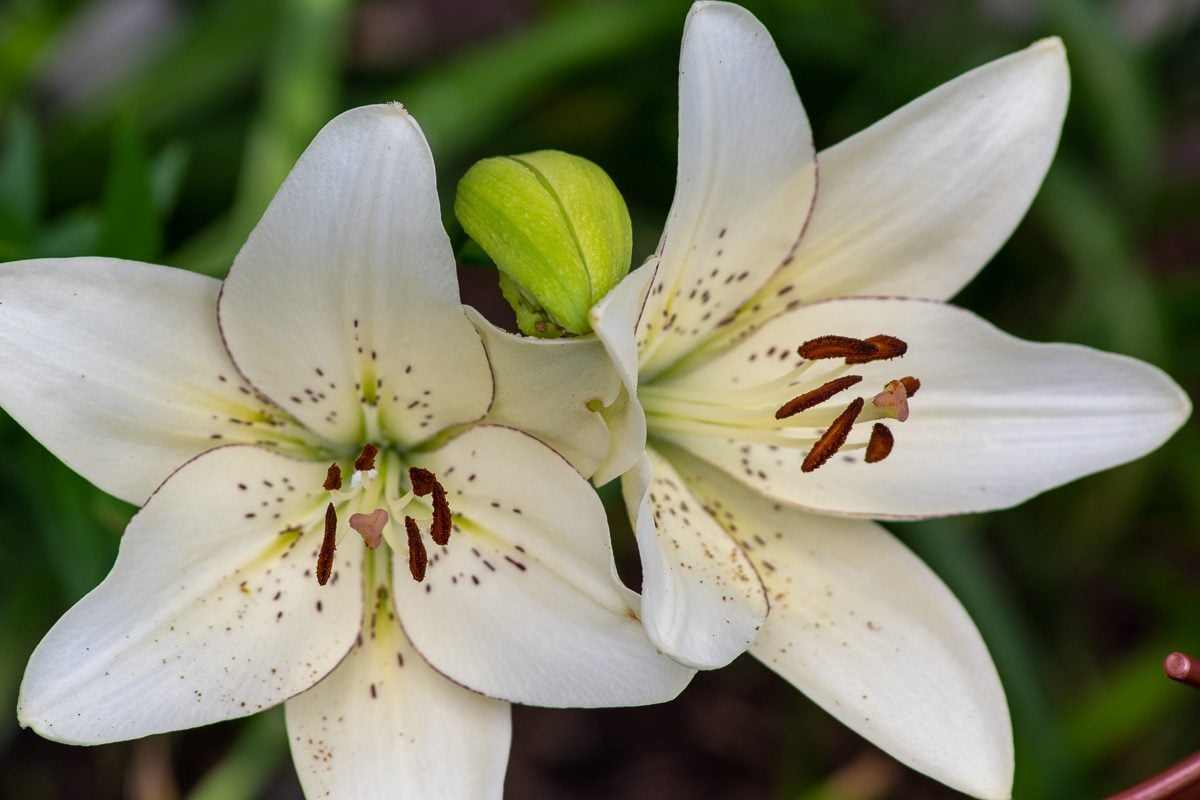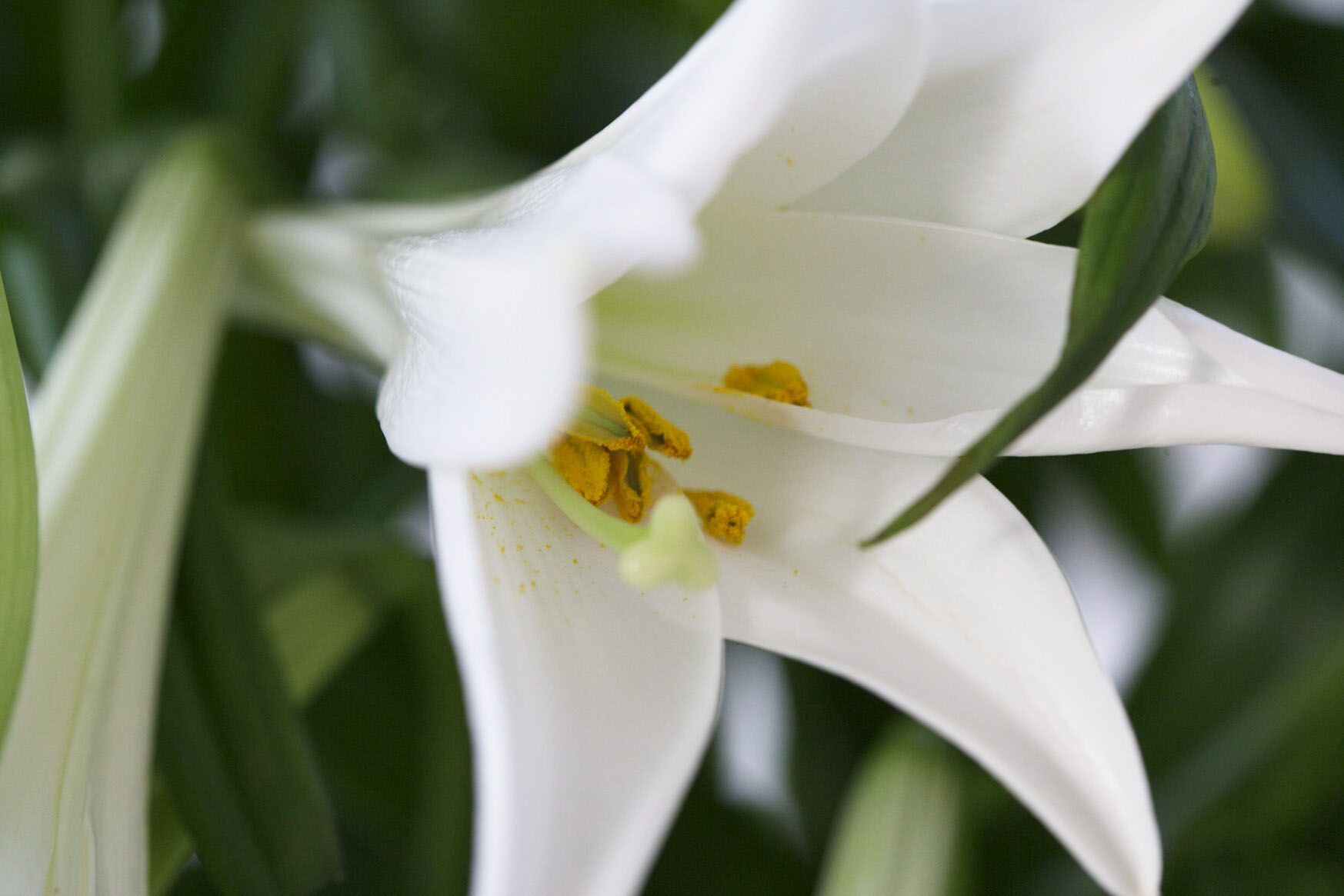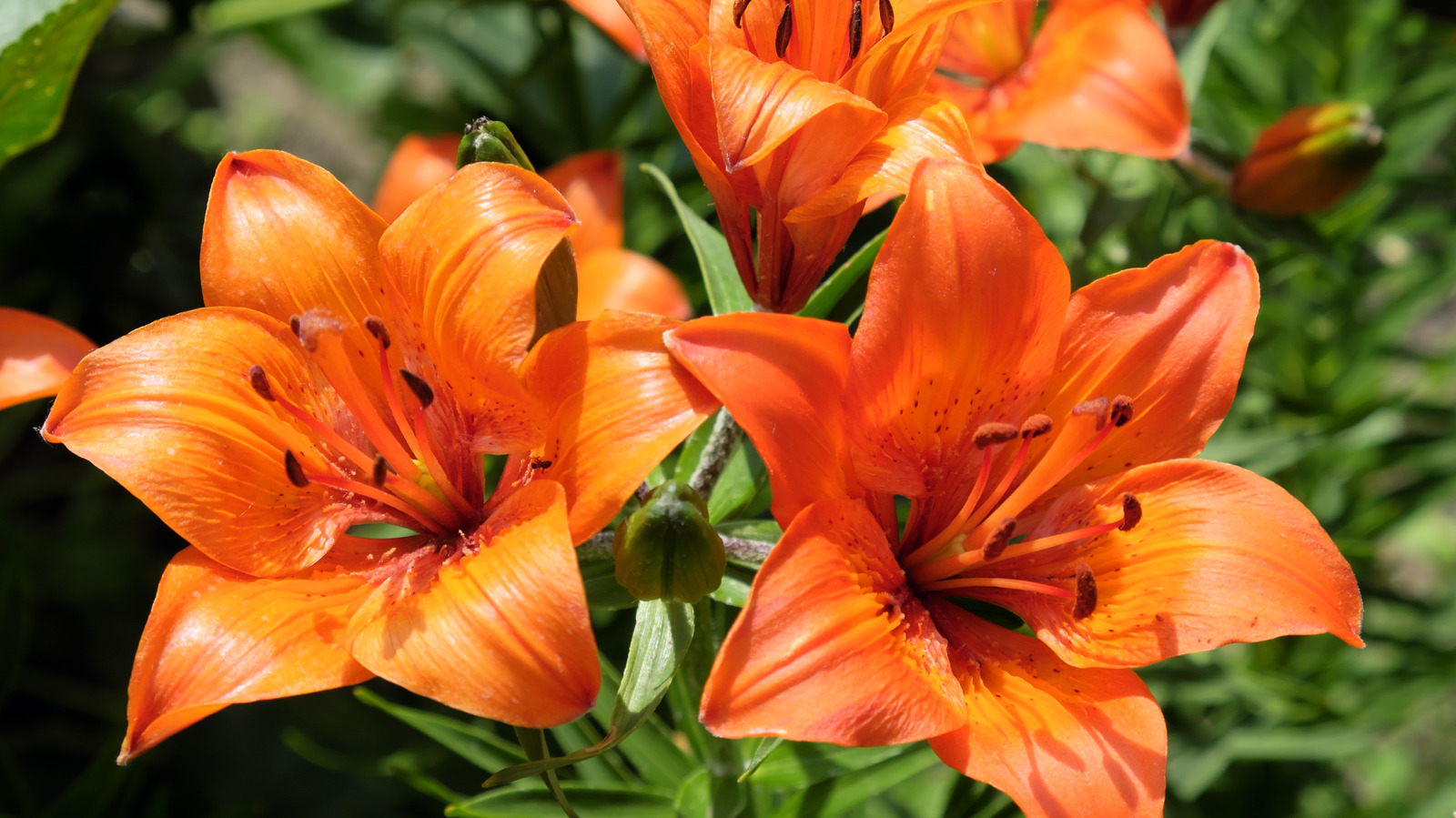An Allure Of Deep Hues: Exploring The Mystery Of Lily Pearl Black
Detail Author:
- Name : Casimir Hyatt
- Username : marcelino.kuhn
- Email : abshire.delaney@mcdermott.com
- Birthdate : 2004-03-30
- Address : 9079 Stokes Dale Port Leilani, WI 23211
- Phone : 680.492.3312
- Company : Auer, Metz and Lesch
- Job : Motorcycle Mechanic
- Bio : Ullam est et a placeat et deleniti enim. Vero est voluptas harum numquam nulla illum repellendus. Voluptatem quam animi non ipsa laborum.
Socials
linkedin:
- url : https://linkedin.com/in/karina_real
- username : karina_real
- bio : Quia necessitatibus doloribus maiores et.
- followers : 4220
- following : 686
tiktok:
- url : https://tiktok.com/@karina.marquardt
- username : karina.marquardt
- bio : Quia maiores fugiat est quis consequatur accusantium.
- followers : 1724
- following : 259
facebook:
- url : https://facebook.com/karina.marquardt
- username : karina.marquardt
- bio : Repellendus ratione facilis voluptatem recusandae sit sunt.
- followers : 2952
- following : 1874
There's something truly captivating about flowers that push the boundaries of conventional color. Imagine, if you will, a bloom so dark it seems to absorb all light, yet with a subtle, shimmering quality that catches your eye. This very idea of a "lily pearl black" variety sparks a lot of curiosity among garden lovers, and it's almost a quest for something truly unique in the plant world. We're going to explore what such a lily might entail and how it connects to the wonderful diversity of lilies we already know and love.
Lilies, you see, are quite important in the plant kingdom, and they're celebrated for their beauty and variety. My text tells us that these flowering plants come in an incredible array of forms and shades. We've pulled together a list, for example, of 40 different types, including favorites like calla lilies, and they show off many colors such as white, purple, orange, and more. So, the concept of a very dark, perhaps even black, lily, isn't too far-fetched when you consider this vast spectrum.
Today, on April 27, 2024, we're talking about how gardeners are always looking for something special to make their outdoor spaces stand out. This pursuit often leads to a fascination with rare colors and textures. Thinking about a "lily pearl black" helps us appreciate the wide world of possibilities within the genus Lilium. It also encourages us to look closer at the subtle beauty in every bloom, even the most common ones, and perhaps, just perhaps, it might inspire us to look for those deeper, richer tones.
Table of Contents
- The Allure of Deep Hues in Lilies
- A World of Incredible Lilies: Beyond the Ordinary
- Cultivating the Extraordinary: Tips for Your Lily Garden
- The Community and Resources for Lily Enthusiasts
- Frequently Asked Questions About Unique Lilies
The Allure of Deep Hues in Lilies
There's a special kind of magic in very dark flowers, isn't there? They add a touch of drama and sophistication to any garden space. When we talk about a "lily pearl black," we're imagining a bloom that captures this deep, almost mysterious quality. It's a color that can make other, brighter flowers pop, or stand alone as a striking focal point. This fascination with dark hues is a pretty common thread among gardeners, who are always looking for that distinctive touch.
What Makes a Lily Appear "Black"?
It's interesting to consider that true black flowers are actually quite rare in nature. What we often perceive as "black" in lilies are actually incredibly deep shades of purple, maroon, or even a very dark red-brown. These colors are so intense that, in certain light conditions, they simply look black. My text mentions different colored lilies, including purple ones, which shows just how much variety there is. Some cultivars are bred specifically to achieve this near-black appearance, and they are quite sought after for their unique visual impact. You might see a bloom that, for instance, has petals so rich in pigment they absorb nearly all light, creating a shadowy effect.
For example, some lilies might have a deep, velvety texture that enhances this dark look. The way light hits the petals can really play tricks on your eyes, too. A lily that appears dark purple in bright sunlight might seem almost pure black in the shade of late afternoon. So, it's really about the intensity of the color and how it interacts with its surroundings. This makes searching for a "lily pearl black" a bit like searching for a hidden gem, as the exact shade can vary so much.
The "Pearl" Quality: A Unique Luster
Now, what about the "pearl" aspect of a "lily pearl black"? This part of the name suggests a unique luster, a subtle sheen that makes the dark petals truly special. A pearl-like quality on a flower could mean a delicate iridescence, where the surface seems to shimmer slightly as you move around it, or perhaps a soft, satiny finish that reflects light in a gentle way. This isn't about being shiny, you know, but more about a refined glow that adds depth to the deep color. It’s a very subtle effect that makes the bloom even more captivating, and it's what really sets apart a truly special flower.
This subtle glow might come from the microscopic structure of the petal cells, which could scatter light in a particular fashion. It could also be influenced by a fine, almost imperceptible texture on the petal's surface. Think of how a black pearl looks – it's dark, but it has this incredible, soft glow that makes it luxurious. That's the kind of effect we're imagining for a "lily pearl black" bloom. It would be a rather striking combination of deep color and delicate radiance, making it a true showstopper in any garden setting.
A World of Incredible Lilies: Beyond the Ordinary
The world of lilies is truly vast and full of surprises, as my text hints at. There are so many species and hybrids, each with its own charm and personality. This incredible diversity is what makes gardening with lilies so rewarding; you can always find something new and exciting to grow. The genus Lilium, which includes 80 to 100 species, is native to temperate areas of the Northern Hemisphere, so it's a very widespread and adaptable group of plants, which is quite fascinating.
From Martagon to Trumpets: Diversity in Form
My text beautifully describes the range of lilies, from "the dainty, purple pendent blooms of l,Martagon to the enormous, orange trumpets of ‘enchantment’." This really highlights the incredible variety in flower shape and size within the lily family. Martagon lilies, for instance, have a very distinct, Turk's cap shape, with petals that curve backward, while trumpet lilies have large, outward-facing, funnel-shaped blooms. This wide array of forms means that even if a "lily pearl black" isn't a true species, it could certainly be a hybrid that combines desirable dark colors with an appealing flower structure. It’s almost like nature’s own artistic expression, wouldn’t you say?
This diversity extends beyond just the flower shape, too. Lilies come in various heights, from shorter garden varieties to towering specimens. Some have spotted petals, while others are solid. The potential for a "lily pearl black" to emerge from such a rich genetic pool is certainly there, perhaps through careful breeding and selection over many generations. Gardeners and hybridizers are always working to create new and exciting varieties, pushing the boundaries of what's possible in terms of color and form, and that's a pretty cool thing.
Native North American Lilies and Their Charms
My text also invites us to "Explore 22 native north american lilies, including favorites like turks cap, trout, and wild tiger lily." These native species are incredibly important, not just for their beauty, but also for their genetic resilience. They have adapted to local conditions over centuries, making them robust and often easier to grow in their natural habitats. The wild tiger lily, for example, is quite striking with its vibrant orange, spotted petals. It's a very familiar sight in many areas, actually.
Understanding native lilies gives us a deeper appreciation for the entire genus. These plants contribute significantly to the overall genetic diversity of lilies, which is crucial for developing new cultivars, including those with unique colors like the imagined "lily pearl black." They often possess characteristics that can be valuable in breeding programs, such as disease resistance or adaptability to different soil types. So, in a way, these wild beauties are the foundation for all the amazing garden lilies we enjoy today, and they truly are a testament to nature's ingenuity.
Cultivating the Extraordinary: Tips for Your Lily Garden
Bringing the magic of lilies, especially those with unusual colors, into your own garden is a truly rewarding experience. Lilies are generally quite straightforward to grow, and with a little bit of care, they can provide years of enjoyment. My text reminds us that "many lilies are prized as" garden plants, and for good reason. They add height, color, and a touch of elegance to any outdoor space, making them a fantastic choice for gardeners of all skill levels. It's really quite satisfying to watch them grow and bloom, you know.
Getting Started with Lily Bulbs
Most lilies, as my text points out, "grow from a bulb." This means that planting them is a bit like planting tulips or daffodils. You typically plant lily bulbs in the fall or early spring, ensuring they have good drainage and a spot where they can get plenty of sunlight, usually at least six hours a day. The soil should be well-draining, as soggy conditions can cause the bulbs to rot. It's a pretty simple process, but getting the conditions right from the start makes a big difference. For those dreaming of a "lily pearl black," selecting healthy, plump bulbs is the first step towards success.
When planting, you generally want to dig a hole that's about two to three times as deep as the bulb is tall. Place the bulb with the pointed end facing up, and then cover it gently with soil. A little bit of compost mixed into the planting hole can give them a good start, too. Remember that lilies are perennials, meaning they come back year after year, so choosing the right spot is important for their long-term health. They tend to be quite hardy once established, which is a really nice feature for a garden plant.
Blending Varieties for Continuous Bloom
My text offers a fantastic tip: "By carefully blending early, midseason, and late varieties of lily into your garden, you will enjoy their" blooms over a much longer period. This is a brilliant strategy for any lily enthusiast. If you're hoping to cultivate a "lily pearl black" or other unique dark varieties, consider how their bloom time fits into your overall garden plan. You could have early-season dark lilies followed by mid-season ones, ensuring a continuous display of deep, rich colors throughout the summer months. This kind of planning really elevates your garden, doesn't it?
For example, you might pair an early-blooming dark Asiatic lily with a mid-season Oriental lily that has deep maroon tones, and then a late-season trumpet lily with a very dark throat. This creates a succession of blooms that keeps your garden interesting and vibrant. It's all about thoughtful placement and understanding the different types of lilies available. This approach not only extends the visual appeal but also provides a dynamic tapestry of colors and forms that changes with the seasons, which is quite delightful.
Supporting Your Prized Blooms
Lilies, especially the taller varieties, can sometimes benefit from a little support, as my text notes that "the plant is supported by a long fibrous stem and is rooted." While many lilies have strong stems, very tall types or those with heavy blooms might flop over in strong winds or heavy rain. Providing a simple stake early in the season can prevent this and keep your beautiful flowers upright and looking their best. It's a small effort that makes a big difference in maintaining the plant's appearance and health, honestly.
You can use bamboo stakes, metal hoops, or even natural branches to provide support. Just be sure to insert the stake into the ground carefully, avoiding damage to the bulb. Tie the stem loosely to the stake with soft twine or plant ties as the lily grows. This gentle support helps the plant focus its energy on producing magnificent blooms, rather than struggling to stay upright. It's a simple act of care that shows your plants you're looking out for them, and they typically respond with even more beautiful flowers.
The Community and Resources for Lily Enthusiasts
One of the best things about gardening is the community it fosters. There are so many passionate people who love sharing their knowledge and experiences. This is especially true for lily enthusiasts, who often form societies and groups to celebrate these incredible plants. Connecting with others who share your interest can open up a whole new world of information and inspiration, which is really cool. It’s a very supportive environment, generally.
Connecting with Lily Lovers
My text mentions that "The north american lily society (nals) was organized in 1947 to promote interest in the genus lilium." This highlights the long-standing tradition of lily lovers coming together. These societies are wonderful places to learn about new varieties, get advice on growing specific types, and even find sources for rare bulbs. They often host shows and events where you can see stunning examples of lilies and connect with expert growers. It’s a fantastic way to deepen your knowledge and perhaps even find that elusive "lily pearl black" you've been dreaming about. You know, these groups are truly a treasure trove of information.
Being part of such a community means you have access to a wealth of collective experience. Whether you have questions about pest control, soil amendments, or how to propagate your favorite lily, there's usually someone in these groups who has the answer. It’s a very collaborative spirit, and it really helps you grow as a gardener. Plus, it's just plain fun to share your passion with others who understand it, which is something pretty special, I think.
Visual Guides and Further Exploration
My text points out that "Today you can see the colour photographs of lily bulbs on the pacific bulb society’s website and in pontus wallstén’s beautifully illustrated book, the lily species and their bulbs." This is a great reminder that visual resources are incredibly valuable when exploring the vast world of lilies. High-quality photographs can help you identify different species, appreciate the subtle nuances of color, and discover new varieties you might want to add to your garden. For instance, seeing a picture of a very dark lily can really help you understand what a "lily pearl black" might look like in reality.
Books and online databases dedicated to lilies are fantastic tools for research. They often provide detailed information on cultivation, history, and the characteristics of various species and hybrids. Exploring these resources can inspire you to try growing different types of lilies or to experiment with new color combinations in your garden. For more general gardening advice, you might also find helpful information on sites like The National Gardening Association, which offers a broad range of resources. Learning more about lilies on our site can also give you some great ideas, and you might want to check out this page for more gardening tips.
Frequently Asked Questions About Unique Lilies
People often have a lot of questions about unusual lily varieties, especially when they hear about something as intriguing as a "lily pearl black." Here are some common inquiries that gardeners often ask when exploring the deeper, more mysterious side of the lily family, and they're pretty good questions, actually.
Are there truly black lilies?
While a lily that is absolutely, perfectly black like charcoal doesn't naturally exist, there are many lily varieties that come incredibly close. These are typically very deep shades of maroon, purple, or even dark brown, so dark that they appear black in certain light. Breeders have worked hard to develop these near-black cultivars, and they are quite stunning. So, in a practical sense, yes, you can find lilies that give the impression of being black, which is pretty amazing.
What conditions do dark-colored lilies prefer?
Generally, dark-colored lilies prefer the same growing conditions as most other lilies: well-draining soil, plenty of sunlight (at least six hours a day), and protection from strong winds. Some gardeners find that very dark blooms can absorb more heat, so in extremely hot climates, a little afternoon shade might be beneficial to prevent scorching. It's important to provide consistent moisture, especially during their active growth period, but never let them sit in soggy soil, which is a common mistake, honestly.
How can I find unusual lily varieties like 'lily pearl black'?
Finding truly unique or rare lily varieties often requires a bit of searching. You might start by checking specialty bulb nurseries, both online and local, that focus on unusual or heirloom plants. Joining lily societies, as mentioned before, can also be a fantastic way to connect with growers who specialize in unique cultivars. Sometimes, attending local plant sales or garden shows can reveal hidden gems, too. It's a bit of a treasure hunt, but the reward of finding that special bloom is definitely worth the effort, you know.


